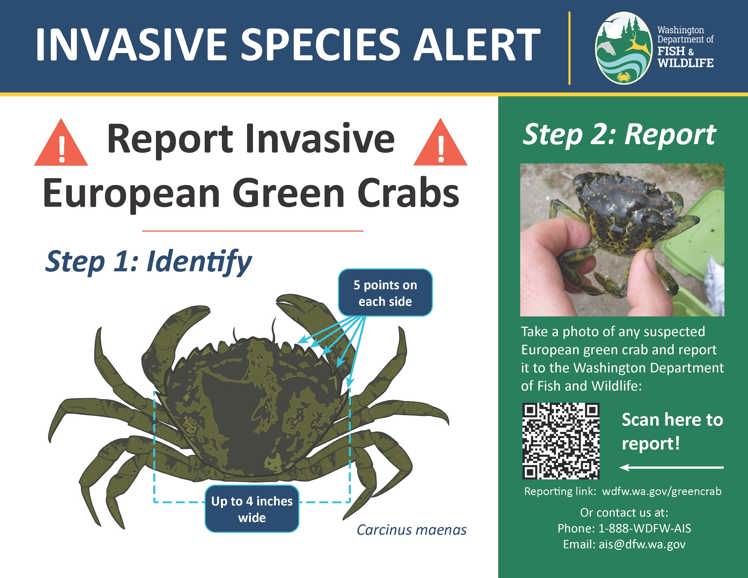
Why are European Green Crabs a Concern?
European green crabs (EGC) are considered one of the world’s worst invasive species. ECG can outcompete native crabs, decimate shellfish populations, and destroy important eelgrass habitats. One EGC can eat up to 40, half-inch clams per day! The EGC threatens Washington’s environment, coastal economies, and tribal and cultural resources. You can learn more about the European green crab on the Washington Department of Fish and Wildlife's website.
Report a European Green Crab


